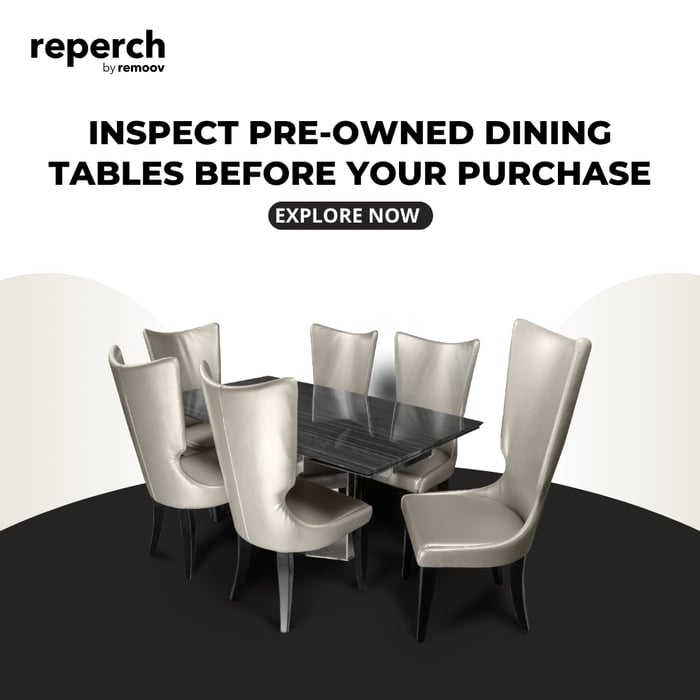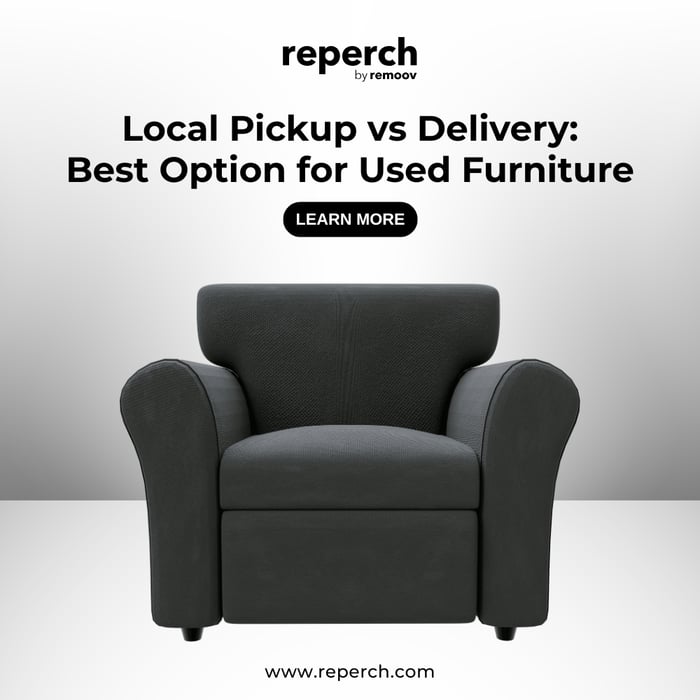A dining table anchors family dinners, late‑night homework, Sunday brunch with friends, and every celebration between. Buying one brand new can strain a budget, yet many high‑quality tables already exist in homes across the Bay Area. Choosing a pre‑owned piece gives that craftsmanship a second life, trims waste, and delivers unique style at a friendlier price. Success comes down to a careful inspection. Follow the steps below and you will spot hidden flaws, estimate refinishing costs, and secure a table that serves delicious memories for years.
1. Measure Room, Pathways, and Table Footprint
Map the Space First
Room dimensions. Record length and width of the dining area.
Clearance zones. Leave at least ninety centimeters between the table edge and walls or sideboards so chairs slide out comfortably.
Doorways and stairwells. Confirm the table will fit through every turn on the path from seller to dining room.
Painter’s Tape Trick
Mark the outline of the prospective table on the floor. Live with the tape for a day. Stand, walk, and pull chairs in and out. If traffic feels cramped now, it will only worsen once guests arrive.
2. Study the Construction Materials
Solid Wood Tops Outperform Particleboard
Oak, maple, walnut, teak. Dense grains resist dents and moisture rings.
Pine. Lightweight and attractive but prone to scratches.
Engineered core with veneer. Fine for light use but veneer chips easily when chairs bump corners.
Bring a small flashlight. Look under the tabletop for grain patterns that match the surface. Edge banding that peels is a sign of veneer over particleboard.
Joint Quality Indicates Longevity
Underneath, check how aprons meet legs. Look for dowels, corner blocks, or mortise‑and‑tenon joinery fastened with screws. Metal brackets add strength. Staples alone mean shortcuts.
3. Test Stability and Balance
Stand at one corner of the table and apply gentle pressure forward and backward.
Try to rock the table side to side.
Lift one end five centimeters off the floor. The opposite legs should rise together. If the frame twists or creaks the structure needs repair.
Loose legs often tighten with new hardware but warped aprons require professional work.
4. Examine the Surface in Daylight
Look for:
Deep scratches that penetrate finish.
Water stains in cloudy white or dark rings.
Sun fade where placemats once lay.
Heat marks from hot dishes.
Minor scuffs sand out during refinishing. Dark stains inside the wood indicate moisture reached the core and may resurface even after sanding.
Run your palm across the surface. Rough patches suggest chipped varnish. A fingernail that catches on lifted grain means extra sanding hours.
5. Inspect Leaves and Extension Mechanisms
Many vintage tables hide center leaves or slide‑out wings. Open and close them fully.
Smooth glide. Tracks should slide without grinding.
Aligned seams. When closed, leaves sit flush with no height difference.
Locking hardware. Wood pegs or metal latches keep leaves tight. Missing parts lead to wobbles.
If leaves stick, a light coat of paste wax can restore movement. Bent metal rails may need replacement, and those parts can be difficult to source for older brands.
6. Check Chairs for Strength and Comfort
Even if you plan to mix chairs later, inspect any that come with the table.
Grab the top rail and rock gently; joints should not wiggle.
Sit, lean back, and lift one leg slightly. A stable chair stays quiet.
Flip the seat. Look for corner braces and screws, not only nails or glue.
Seat cushions with tired foam add cost if re‑upholstery is needed. Factor fabric and labor into your budget.
7. Identify Signs of Past Repairs
Look beneath the finish for:
Extra screw holes or metal plates.
Wood filler mismatched in color.
Uneven leg lengths padded with cardboard shims.
A few careful repairs suggest a table that was loved and maintained. Many rough fixes signal a history of heavy damage.
8. Evaluate Age, Style, and Brand
Age Clues
Patina and shrink lines in old hardwood reveal decades of service.
Screw heads with straight slots often pre‑date Phillips screws.
Maker stamps under the tabletop or inside drawers.
Why Brand Matters
Recognized brands such as Stickley, Ethan Allen, or G Plan often publish catalog specs and replacement part numbers. That data helps with leaf matching or finish touch‑ups later.
9. Plan for Refinishing or Touch‑Ups
Some projects need only mineral oil or paste wax. Others call for full sanding, stain, and polyurethane.
Time and supplies
Sandpaper grits eighty through two‑twenty.
Orbital sander rental if the top is large.
Stain and clear coat.
Brushes, lint‑free rags, gloves.
Compute material cost and hours against the table price. A bargain piece can turn expensive if you lack tools or workspace.
10. Confirm a Pest‑Free Purchase
Wood furniture sometimes harbors powder‑post beetles. Look for tiny holes and fine sawdust trails. Press masking tape over suspect spots overnight; fresh dust on the tape means active insects.
For upholstered seats:
Lift fabric flaps and seams.
Use a flashlight to search tufts for black dots or shed skins that signal bedbugs.
When in doubt, treat wood with borate solution and steam‑clean fabric immediately after purchase.
11. Arrange Safe Transport
Moving Supplies
Thick blankets or quilted pads.
Ratchet straps.
Cardboard sleeves for corners.
Furniture dollies for long hallways or elevators.
Always load the tabletop on edge, never flat. Stress on the legs during bumps can crack joints. In a pickup truck keep weight toward the cab and tie down securely against wind lift.
12. Clean and Condition on Arrival
Vacuum dust from joints.
Wipe surfaces with a solution of warm water and mild dish soap, wrung nearly dry.
Dry immediately with a soft cloth.
Apply lemon oil or beeswax polish to nourish wood and revive sheen.
Steam‑clean upholstered seats or treat leather with conditioner.
Allow twenty‑four hours before placing heavy centerpieces. Finish needs time to acclimate after transport and cleaning.
13. Quick Reference Checklist
Inspection Point | Pass | Needs Work |
Table fits room layout | □ | □ |
Solid hardwood frame | □ | □ |
Joints tight, no wobble | □ | □ |
Surface free of deep gouges | □ | □ |
Leaves open and lock smoothly | □ | □ |
Chairs sturdy, upholstery clean | □ | □ |
No insect activity detected | □ | □ |
Brand or maker mark identified | □ | □ |
Transport plan confirmed | □ | □ |
Cleaning supplies ready | □ | □ |
Conclusion
A pre‑owned dining table can become the heart of daily life and the hero of holiday feasts without draining your wallet. Success lies in a patient inspection. Confirm solid wood, tight joinery, smooth leaves, and pest‑free parts. Evaluate surface wear honestly against your refinishing skills. Measure both room and pathway twice. When every box on the checklist is ticked you will bring home a table ready to host laughter, homework sessions, and the occasional candle‑lit dinner for years to come.
Reperch curates secondhand dining sets that already meet many of these standards. Browse detailed listings, reserve local delivery, and skip the risky guesswork. Smart choices today keep quality furniture in circulation and make every meal a little kinder to the planet.
Enjoy the hunt and happy dining.








